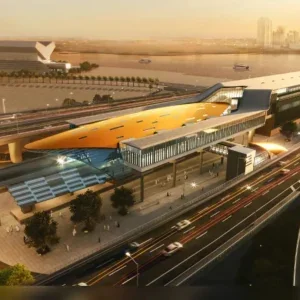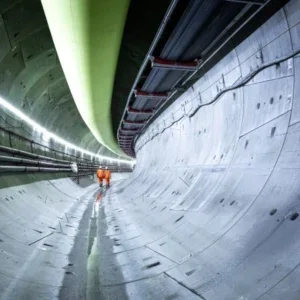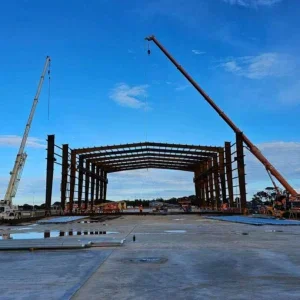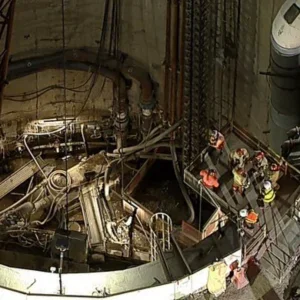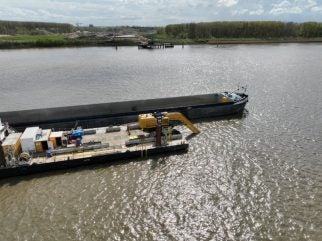
The shipping channel will be moved temporarily to the north and narrowed from 180m to 80m, to make room for dredging the trench for the immersed tunnel under the River Scheldt. The eight tunnel elements, which are currently being built in Zeebrugge, will be put in place next year.
The six-lane 1.8km tunnel, being built by TM Cotu, a consortium of Besix, Stadsbader Contractors, Deme Group and Jan De Nul, is part of the Oosterweel Link road which will carry traffic around the outskirts of Flanders.
In an update on progress, the Flemish government said excavation of the third and last construction pit for access to the Scheldt tunnel had started on the Left Bank. Here the road between the tunnel and the new Sint-Anna Linkeroever junction will be built and by the end of the summer the new Scheldt dyke on the Left Bank will be ready.
Scheldetunnel Linkoever project leader Maarten Pombreu said that as the ramps for the new Scheldt tunnel were progressing on both banks and the tunnel elements would be completed at the end of this year, work was now under way in the river.
“We will first dredge a temporary channel so that shipping traffic is pushed more towards the Right Bank and can pass the works. In this way, we free up space on the Left Bank for dredging the southern part of the tunnel trench. Afterwards, shipping traffic will shift again towards the Left Bank, so that the northern part of the sinking trench along the Right Bank can be dredged,” he said.
The dredging will remove 1.3 million m3 of soil, including about 200,000m3 polluted with oils and heavy metals which will be transported to processing centres.
To create the tunnel access on the Left Bank, approximately 1 million m3 of soil is being removed and will be used for landscaping in the area.
Groundwater pumped during construction is being treated at a purification plant to remove PFAS (per- and polyfluoroalkyl substances) and then pumped to the Blokkersdijk nature reserve.



